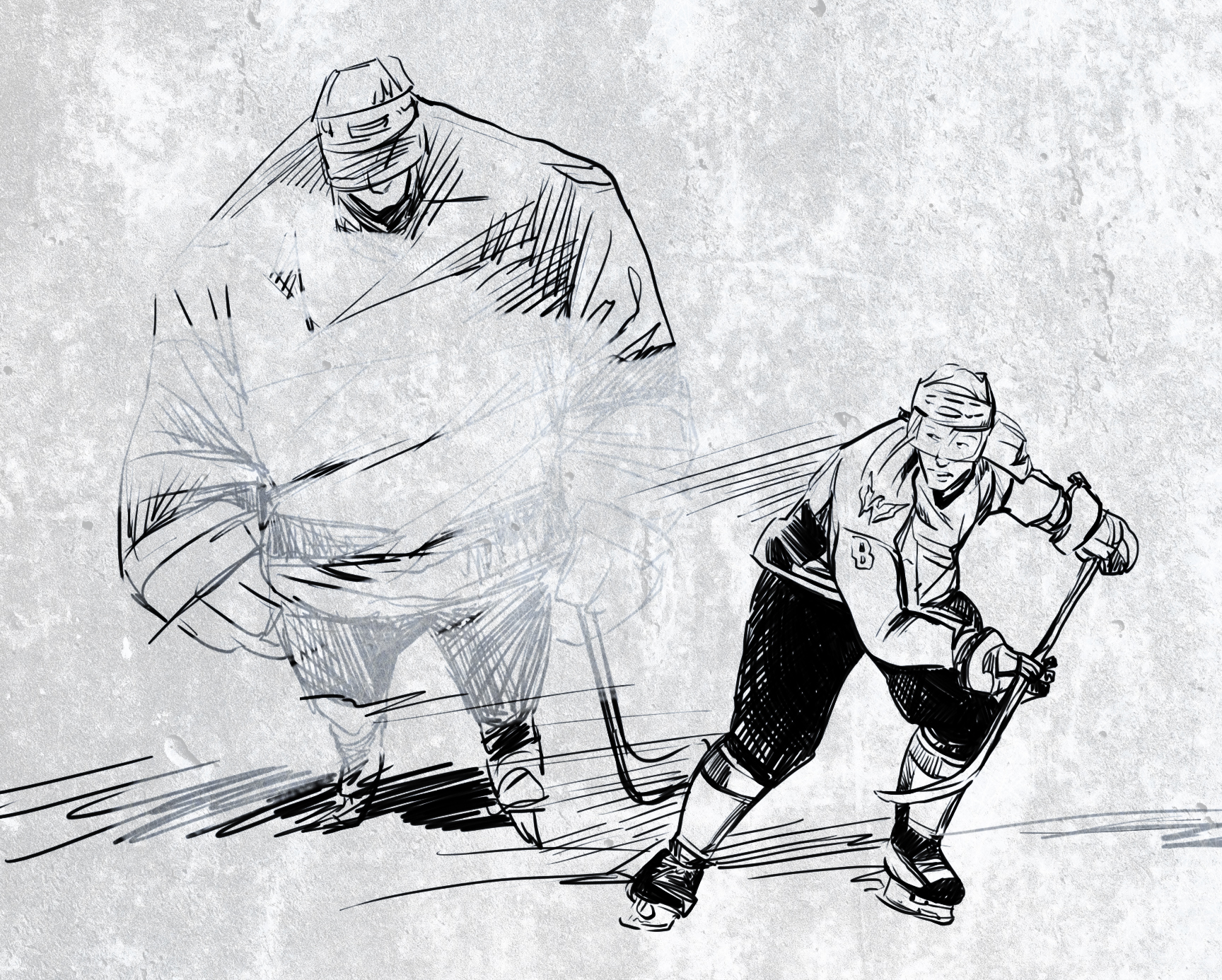As comedian Rodney Dangerfield once said, ìI went to a fight the other night and a hockey game broke out.î Hockey is a high-flying, combative, skill-based sport. Fighting has always been a part of the game. It has given fans the excitement of seeing two players knocking each otherís teeth out. This makes for some unbelievable story lines. However, today we are seeing a paradigm shift in terms of how this type of behaviour is used by the teams.
Throughout the years, there have been players that have been designated as enforcers. Their overall job was to be a deterrence to the other teamsí players, so that they would not take any liberties with the star players of their team: essentially the policeman. If another teamís player took a cheap shot on their star player, the enforcer would go after that player.
For example, Wayne Gretzky (ìThe Great Oneî), was said to be so smart that no one could hit him. However, over the years, linemates such as Dave Semenko and later Marty McSorley were there to be his bodyguard to deter anyone who might try. No one would dare touch him with these two hockey mercenaries at his side. This has been the argument for having such a player in the lineup for decades. However, in todayís game we are seeing that this may not be entirely true anymore.
A prime example of this is the Toronto Maple Leafs. For years, the Leafs would employ an enforcer in the lineup to either bully or act as deterrence for the oppositionís players. Brian Burke, the former general manager (GM) of the Toronto-based team, once bluntly proclaimed, ìReduced to its simplest truth, fighting is one of the mechanisms that regulates the level of violence in our game […] Players who break the rules are held accountable by other players.î Players such as Colton Orr (119 career NHL fights) and Frazer McLaren (37 career NHL fights) were regularly employed in the Leafs lineup to serve such a role under the realm of belligerent advocates like Brian Burke, Dave Nonis, and Randy Carlyle. They came from an older school of thought that believed that this role was necessary to have in a lineup on a nightly basis. The Leafs underwent a major philosophical change right before this season, hiring managers like Kyle Dubas who took a more analytical and statistical approach. Tellingly, Orr and McLaren are no longer on the Leafs roster, echoing a league -wide sentiment that the role of the enforcer is dying..
Important to this shift from traditional hockey to analytic stats-based hockey is the Corsi Number. In short, a Corsi Number measures the shot attempt differential of a player while on the ice, including shots on goal, missed shots, and blocked shots for and against. Players are now being analyzed in terms of their effectiveness on the ice, and how they help their team, while not just looking at point totals. With this philosophy, cap space is of utter importance. Teams are now trying to fill a roster of 24 players under a salary cap, and will be looking closely at which players will be most efficient and effective in terms of economic considerations and their production of play on the ice.
This is the intrinsic reason as to why the role of the enforcer is dying. Teams are deciding with this new information that it actually has adverse effects to use the limited cap space on a full- time player who is only capable of fighting. Teams have referred to the four-line scoring models of the LA Kings and Boston Bruins, who have both won Stanley Cups in recent years.
Fighting will always be a part of the NHL brand of hockey. Fans love it, the players respect it, and simply put, it helps sell tickets. However, teams are now shifting away from having a guy whose only job is to fight. They are starting to realize that it is inefficient and uneconomical in terms of fitting a roster under the salary cap. Teams will start resorting to ëteam toughness,í where the whole roster will need to take on the responsibilities of protecting themselves and one another. This will entail that even the great players, like Wayne Gretzky was in the past, are going to need to be able to respond to a potential or evident threat from an opposing player. A teamís overall toughness module might lead for the catalyst of the demise of the disciplinarian. Generally speaking, the days of the bodyguard or enforcer are coming to a slow close.

